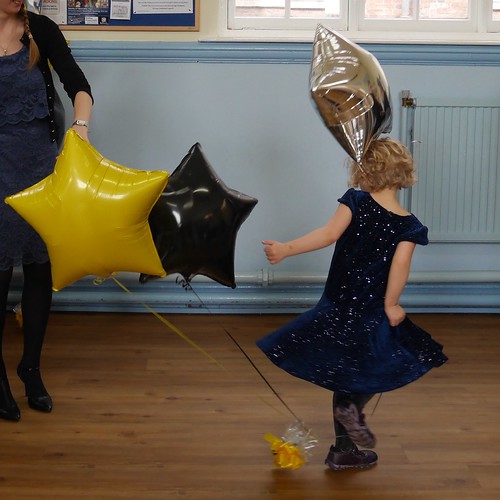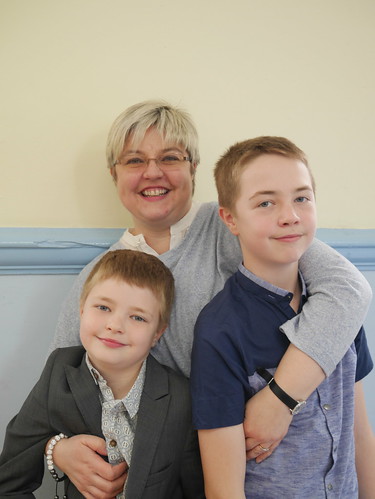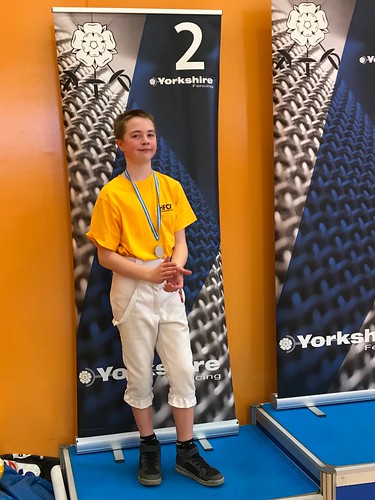Revelation 2019 was a bit different for me, as I signed up for Steve E’s multislot game of The Sword, the Crown and the Unspeakable Power (SCUP) which covered the whole of Saturday, and had decided to run the Generation Ship playset for Legacy: Life Amongst the Ruins myself on the Sunday across both slots.
The Generation Ship setting is a plug-in for the Legacy rules that allows your players to explore the fates of the crew and passengers of an interstellar colony ship who have woken up several hundred years into a voyage, long before they reach the intended destination. The ship isn’t designed as a generation ship, but that’s what it becomes. There’s lots of great SF out there that uses a variation of this theme, ranging back to Brian Aldis’ Non-Stop. Noumenon (Marina J. Lostetter) used ‘generation fleets’ and Hull Zero Three (Greg Bear) did it more traditionally. To my shame Aurora (Kim Stanley Robinson) is still on my list to read, even though I’ve had a copy for a while. In the world of film Passengers (2016) looks at this but personally I don't like the film because I think the male character is a dick[1].
The game begins perhaps a hundred years after the first survivors woke up, so the memories of the times before the fall are distant. Perhaps there are one or two people around who remember what life was before the ship, but they are rare. The game has some objectives hardwired in; restoration of the ship systems. These replace ‘wonders’ in the main game but are mechanically similar. Obtaining control over a ship system gives the owner long term benefits, and can result in another family facing fortunes, trials or both.
Powered by the Apocalypse (PbtA) games can tend to eat plot much more quickly than some of the more traditional brethren, but I was a little concerned that two slots were going to be tight. That gave us about 6 hours of gaming time after you take into consideration natural breaks and the need to get some food. I decided that the easiest way to get around this would be to do the preparation work online in advance, the same way I had done in previous years. Instead of using a soon-to-be-defunct Google+ community, I decided to use the expanded functionality of the Tavern (https://www.gamingtavern.eu/) . All the players agreed as they were either already there or willing to join. Maybe two months before, I set it all up, took a roll call, and got everyone to set the notifications system to alert them to a new post.
Legacy operates at two different levels; it has a Family level (used for ‘zoomed out’ big picture play) and a Character level (used for ‘zoomed in’ focused play around critical actions). It’s one of the mechanics that attracted me originally; the game is built to be set against the sweep of history. Characters can leave relics behind, and their actions will cause the family to rise or fall over the generations.
When I did my initial read through the game, I discovered that the playbooks file had two of the six families missing. A quick email to Jay Illes, the creator of the game, quickly got me a set of the family playbooks, and the file at Modiphius was updated as a result. I then had to cut the file into several blocks (Family Playset, Character Playsets and Moves/References) so I could manage the information flow to the players into viable chunks. I uploaded the family playbooks to the Tavern, and the players - to their credit - swiftly chose the families that they wanted to play.
I was all set to start a staged run through the options that they had on their playbooks when the Tavern was taken down to transfer between hosts and registries. It was meant to be for a long weekend, but events conspired and it went down until after Revelation. This blew a hole through our preparation plans; I did consider falling back to the Facebook group, but that didn’t happen because I was expecting the Tavern back and then I became embroiled in the Garricon organiser’s response to the issues raised by Zak Smith’s behaviour, finding myself draft policies and managing responses rather than preparing for the convention.
Faced with truncated preparation, I decided to go with completing the playbooks at the table, knowing I could reduce the difficulty of activating the ship systems to compensate. It’d need to be focused, but I figured that was the way that things usually go at conventions.
Preparation took us over two hours, something that I hadn’t expected. It was hard to achieve the same kind of focus and energy with this as I had when I ran SCUP at Furnace in late 2018. On reflection, this was partly due to the information overload that the players faced with two playbooks and two sets of base moves plus gear to absorb. Legacy excels in worldbuilding, but there were almost too many relationships available and agreements around treaty proved complex. Treaty is the subsystem of favours owed and held between the families, and it proved challenging to establish and several of the players just didn’t get it at first. In discussions after the game, Jay (who was attending the convention) mentioned that the new book based on Legacy, Free from the Yoke, simplifies the treaty system significantly by removing the different levels.
I used self-adhesive flipcharts for the game in a similar way to how I did this for SCUP. However, the number of moving parts and elements meant I was answering questions rather than taking the notes so everyone could see them. As a result, we didn’t have an ‘in-your-face’ break out of relationships and motivations, hooks that the players and I could link into. On reflection, I should have started this, and asked one of the players to cover for me when I was answering questions.
The game begins with an opening Council meeting between the players, and we were definitely feeling our feet and getting our balance. I needed to give a big push to get the game going and moving, but the players got stick into it. It took me a while to get used to zooming in and out between family and character levels. The setting isn’t strong for flipping up and down like this, especially if you’re using the Into the Dark move (which ended up feeling like one long travel sequence from The One Ring). As the various families start with limited resources, and the easiest way to gain them is to explore the ship and scavenge, the early parts of the game need to far more focused on exploring the setting and by necessity being in character-focused play.
One thing that caused some issues was that the content of the playsheets didn’t match the information presented in the book. Now, the book definitely looks like it was the final version, but some move names weren’t aligned and the ways that they worked and the options you could select from differed. They definitely need a proper review and an updated version issuing.
The first age of the game was all about the life support system; riffing off the backgrounds of several of the families, the council determined to send an expedition to find out where the recently awoken survivors who had been appearing came from and to locate the control system for the hydroponics and life support. The mission had the wholehearted backing of two of the families, and the others generally concurred. The Into the Dark move worked okay, but it did mechanically extend the narrative in some parts when I think we could probably have drawn it to a close much faster. Ultimately, the characters prevailed; I’m not sure if they ever felt truly threatened (we never got to a point when harm was done if I recall correctly), but they came back having achieved their objective. Tech, data and surpluses were spent as investments to lead to control of the ship system.
There was a really interesting interplay at the end of the first age when control of the ship system - the life support - was wrestled from the Throng (think drug and vice dealers) by the Enforcers and others. Treaty was used and deals struck at the family level. Most of the players rolled well when they resolved trials and fortunes at the end of the age there was a huge payoff when they realised the potential benefits of a ship system being brought into control. Glenn - who controlled the Enforcers - was looking a bit glum that he didn’t get all these benefits right up to the point where he realised that he could control the environment of the other families and potential force needs upon them. He also got access to surpluses each age he had control of the system. Suddenly, there was a prize and a reason to explore the ship or to try and take control from the other families.
There was a moment, just before lunch when I wasn’t sure whether this would work out. Even with significant reductions in the investments needed for control of the ship systems, the need to run in character mode and explore the ship was making things feel very slow and much more like a dungeon crawl I expected. As this was a double slot, I was worried because I’d asked the players to commit half their convention time to the game and I feared that they would go away disappointed.
However, after lunch the pace of the game quickened, no doubt spurred on by the proximity of trains for some. At the end of the first age, we advanced the timeline by a mere six months (which was good as it meant only two characters were changed). I need to give a shout out to Penda here, as he grabbed and ran with the idea of getting to the ship systems which helped me no end. With new energy, a desperate search started to local a computer network room which would allow us to identify the location of the bridge. Hints of alien involvement grew and the tension started to rise when it was discovered that the ship was off course. In the end, we came to a conclusion in the bridge of the ship, which left the families knowing some kind of alien intervention had happened, that they appeared to be off course, and they needed to get the astrogation arrays under their control if they wanted to restore the ship to its original course rather than ending up in orbit around a planet circling a neutron star. I think that the players went away happy with the result.
Those of us that weren’t on a hard timeline discussed the game for some time after we finished. Jay Illes dropped in the conversation and was very friendly and helpful. He ended up apologising in case his advice seemed like criticism, something that wasn’t necessary! He’s definitely played the game more than me and knows it in depth. He also observed that in a more normal game of Legacy you can easily spend a full session on world-building.
We had some challenges with players focussing on the moves on their sheets cutting across those who were more narratively focussed, but I think that happens across the gamut of PbtA games. Players will inherently have different ends of the spectrum that draw them. As the mechanics are there to drive interaction and the plot, I don’t have an issue with this except when it destroys the flow.
On reflection, I think that the game that I delivered at the table was a solid B. With slightly different circumstances, it would have seen me on my A game.
What would I change?
First of all, I’d either make sure that the pre-generation of families and characters was completed in advance or alternatively pitch this as a three slot game.
I’d consider pre-selecting the family moves to make this faster to the table; not sure if I’d do this.
I’d review the beta of Free from the Yoke and consider simplifying the treaty mechanics for the game.
I’d enlist the players to make sure that we captured all the key-points on the flipcharts so they were visible to everyone.
I’d manage the release of the moves information; this may actually not be necessary if pre-generation was completed in advance. Five sides of player aids (two for each level playbook and one for gear) swamped the players and it took quite some time for them to get their heads around them.
I’d have prepared more beats as I underestimated how much narrative the Into the Dark move chews up. I’d also draw the players in more by asking them about what kind of threats they are facing and how they plan to overcome them.
Conclusion
All in all, I think Legacy is a great game; albeit more suitable for a more extended session than some of its peers. It definitely gets that epic feel of a narrative arc more than other games. I’m happy I ran this and would love to return to it in the future.
Thanks to Nigel, Keary, Glenn, Penda and Remi[2] for the way they embraced making this a fun day.
___
[1] SPOILER - I don't have an issue with the actor, I just have an issue with way that the character woke up the female passenger and condemned her to the same fate because he was looking for an attractive companion. Just felt very wrong to me, and not 'romance' which is one of the categories the film is listed under.
[2] Remi gave me a moment of amusement when he rolled out his second character, Alexa (Mother). Before then, his character had been a replicant with a hive mind who was part of the ship's maintenance functions. It was only later that we discovered through the fiction and 'Alexa/Mother' that she was in fact the education AI who had tried to help her charges by creating replicants programmed using the science and engineering training packages to fix things and support those who had woken up. And she was a hologram, projected from fittings through-out the ship. She knew the IP address of the bridge, but couldn't access it, triggering the quest for a data centre.












